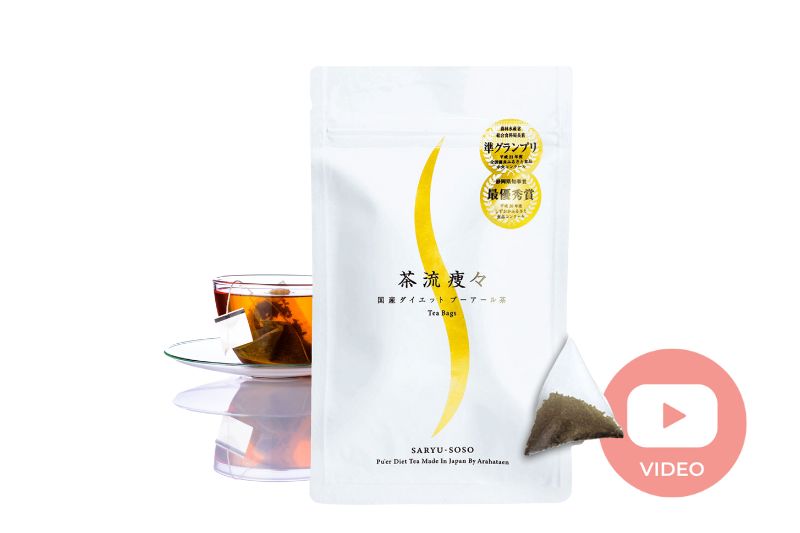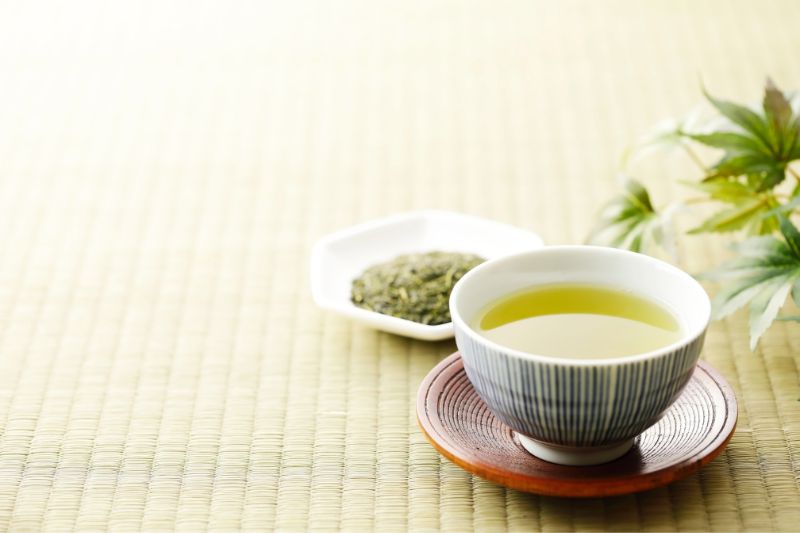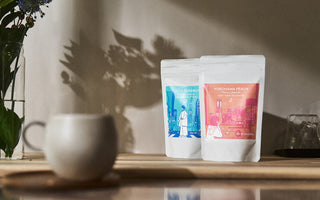Tea is unique in many ways. This uniqueness is not limited to a brand name, nor is it limited to flavors, smells, colors, or cultivars. In fact, the more we invest in tea, the more we learn about its properties, effects, and ultimately what we can get from it. Without exploring the details of tea, this post’s focus is on a particularly historically unique tea that originates from Yunnan, China: pu’er tea. I want to spend the next few moments not only detailing pu’er tea and its importance to Chinese tea tradition but also highlighting Japanese innovation and how they have arrived at their own pu’er tea.
What is pu’er tea?
There are two ways to answer this question: the simple way and the detailed way. The simplest answer is that pu’er tea is a rare fermented tea that is originally from Yunnan, China. This tea is made from "wild old tree" leaves. Unfortunately, this answer leaves out many details and requires added details to fully understand what makes it truly special.
Technically speaking, for tea to be designated "pu’er," it must be grown in Yunnan Province in China (in 2008, for example, the Chinese implemented strict geographical requirements for making pu’er tea) and be processed from the Camellia sinensis assmica plant. The Assamica variety is one of two varieties used in making all teas around the world. This variety is generally considered more tropical than its sister, Camellia sinensis sinensis. It also has larger leaves and flourishes in warmer temperatures.

This technicality is cemented in two processes for producing the end product. As you can imagine, it is not as simple as plucking leaves from the plant and drying them out. The traditional method, also known as "raw pu'er," involves the plucking of a bud and 3 or 4 leaves. The 3rd and 4th leaves that are plucked are leaves that have stayed on the tree for a longer period of time and contain more nutrients and flavor. The leaves are then fried in a pan. This process selectively activates and inactivates certain enzymes, which help define pu’er. The leaves are then withered or rolled and then left to dry under the sun, unlike many other types of tea. One of the immediate benefits of drying the leaves in the sun is that the leaves do not overheat to the point of destroying the remaining enzymes. Another benefit is that the leaves ferment in the sun. The raw tea is overtaken by the fermentation of mold and is then compressed, often into a cake-like form, where it sits in a more controlled environment. Oddly enough, some raw pu’er tea ages for 50 years or more! This entire process turns it more into a black tea and helps define its uniqueness.

Ripe pu’er stands out as a separate process for creating pu’er. The leaves go through a similar process of being plucked, pan-fried, rolled, and dried. However, unlike raw pu’er, the leaves are piled and sprayed with water. In a hot environment, the fermentation subsequently takes hold of the leaves for up to 7 weeks. The tea is then dried and shaped. Ripe pu’er seeks to shorten the aging steps compared to traditional pu’er. In fact, the aging process totals approximately 1 year for many ripe pu’er teas.
Diving deeper into pu’er teas gives us an idea of how to understand quality and some of the important differences in flavors. Some of you may have already experienced pu’er tea from Yunnan. But what makes quality pu’er stand out? A few considerations will help. Part of the answer to this is understanding cultivation. Some pu’er tea is cultivated from "old growth trees" that are known for their highest quality. Plantations, on the other hand, constituted the mass market for tea leaves and were generally of lower quality.
Another part of this question is answered by the way in which the leaves are grown. Higher altitude is a net benefit for pu’er tea in the province of Yunnan. These leaves tend to have a richer flavor. Other valued considerations include "wild trees", larger and older "trees", particularly organic "trees". Older "trees" have deeper roots and have had more time to collect important nutrients. While wild "trees" tend to have a relatively stronger taste mixed with a slight bitterness,

Further, the first harvested tea leaves tend to be of higher quality than the following year’s harvest. This may not be an obvious consideration or noted on tea packages from various producers, but the first tea of the season, even in the world of sencha, is highly noted amongst many tea enthusiasts. It is important to note that there are years where tea may be harvested multiple times, which will lower the quality of the leaves.
Pu’er tea quality is also shaped by several additional factors, including soil quality, air quality, weather, and ultimately the time and care required to produce the desired end product. The seriousness of these considerations is not limited to pu’er tea but helps define it as a separate and beloved tea.
What about Japanese Pu’er tea?
If you were to review the teas produced in a given year in Japan, Japanese pu’er would constitute a relatively small percentage of the overall production. So what makes it unique? First off, Japanese pu’er is not Chinese pu’er. This is an important distinction, not simply in historical terms but in terms of the how-tos. Second, Japanese pu’er stands out in some respects, particularly when considering the way in which it is produced.
Japanese pu’er is best outlined relative to other teas. It is, like Chinese pu’er, fermented tea and ends up in the world of black teas. It leaves you with a dark cup of tea and is often considered pu’er tea alongside Chinese pu’er tea. It is not like sencha, which is considered an unfermented tea. This difference is furthered not only by its color but also by its production methods. The Japanese employ their own innovation into the mix. Instead of aging the tea and differentiating between raw and ripe pu’er, Japanese pu’er is developed from another Japanese tradition.

If you are familiar with shochu, chances are you have been exposed to its link to Japanese pu’er. Shochu 焼酎 is a Japanese alcoholic beverage, approx. 35% or less alcohol is often made from rice, barley, or other bases. In Shochu, a mold breaks down the starches of the base ingredients into fermentable sugars. While there are three types of molds, the one that concerns us and its relationship to Japanese pu’er is Shirokoji 白麹 or "white mold". With the shirokoji, unoxidized green tea is subsequently fermented for approximately four days. In a highly controlled environment that resembles more of a laboratory than a tea production site, Japanese pu’er tea is created. In fact, Japanese innovation was able to create two new polyphenols along the way!
Here is a video we made about Japanese Puerh Tea:
Is Japanese pu’er a serious alternative?
Yes. Japanese pu’er is a great option for pu’er lovers and those curious to try this special tea. Dark and often with a toasty-like flavor, Japanese pu’er is also incredibly healthy. It includes the probiotics you find in Chinese pu’er, in fact pu’er is the only tea that contains probiotics. Additionally, it is loaded with antioxidants and has the benefits of lowering cholesterol and helping people lose weight. It’s not always easy trying out new teas, but Japanese pu’er may not only teach you something about the innovation of tea but also the joys of trying something new.
Buy Diet Puerh Tea
Get Free Bonus Books

Sign up for free to the Green Tea Club to get advice and exclusive articles about how to choose Japanese Tea, and tips, tricks, and recipes for enjoying Japanese tea.
About the author
Kei Nishida
Author, CEO Dream of Japan
Certification: PMP, BS in Computer Science
Education: Western Washington University
Kei Nishida is a passionate Japanese green tea connoisseur, writer, and the founder and CEO of Japanese Green Tea Co., a Dream of Japan Company.
Driven by a deep desire to share the rich flavors of his homeland, he established the only company that sources premium tea grown in nutrient-rich sugarcane soil—earning multiple Global Tea Champion awards.
Expanding his mission of introducing Japan’s finest to the world, Kei pioneered the launch of the first-ever Sumiyaki charcoal-roasted coffee through Japanese Coffee Co. He also brought the artistry of traditional Japanese craftsmanship to the global market by making katana-style handmade knives—crafted by a renowned katana maker—available outside Japan for the first time through Japanese Knife Co.
Kei’s journey continues as he uncovers and shares Japan’s hidden treasures with the world.
Learn more about Kei





